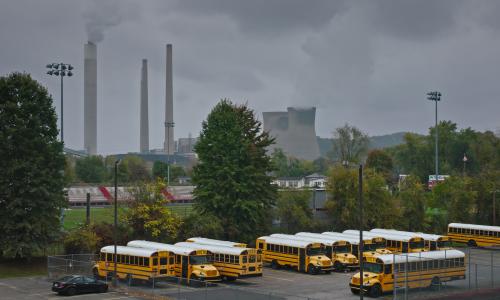The fossil fuel industry’s problematic dealings with a weak regulatory agency were a factor in the Deepwater Horizon disaster in the Gulf of Mexico.
On April 20, 2010, the Deepwater Horizon rig exploded in the Gulf of Mexico. Eleven men lost their lives. Four million barrels of oil gurgled into the Gulf. Eighty-seven days passed before the flow of oil was stopped.
The blowout at BP’s Macondo well was caused by a complex set of factors, including negligence by the oil and gas companies (the National Commission on the BP Deepwater Horizon Oil Spill and Offshore Drilling report called “failure of industry management” the “clear root cause”). One specific related problem that led to the disaster, however, was the fossil fuel industry’s long exploitation of a weak government agency, the Minerals Management Service (MMS), which was supposed to provide regulatory oversight of offshore drilling.
MMS had been rife with various problems for years before the Macondo blowout—for one, a series of scathing 2008 Inspector General reports detailed the illegally close relationship between members of MMS’s Royalty in Kind program and fossil fuel company employees—but at issue particularly in the Deepwater Horizon disaster was the fossil fuel industry’s practice of opposing potential MMS science-based regulations that could have prevented the spill.
Indeed, the Commission’s report concluded that with regard to the expansion of deep-sea drilling, regulators “failed to keep pace with the industrial expansion and new technology—often because of industry’s resistance to more effective oversight.” In one case, when MMS tried in 1991 to push regulatory reform, promoting a safety and environment management program for outer continental shelf lessees and operators, its efforts were “repeatedly revisited, refined, delayed, and blocked alternatively by industry or skeptical agency appointees” to the point where such regulation still wasn’t finalized by the 2010 disaster—nearly 20 years later.
In another case, with drilling expanding at the same time MMS’s resources were stretched even thinner, MMS could not keep up with technical drilling safety requirements. MMS ended up halving the frequency of tests on one critical piece of well control technology—blowout-prevention stacks—because industry claimed the technology was more reliable than the agency thought. And when MMS did regulate the fossil fuel industry, its regulations often came from the very industry it was supposed to be controlling. An August 2010 Washington Post story found that according to American Petroleum Institute records, MMS had adopted at least 78 industry-generated standards.
In another example of weak regulation playing a role in the 2010 disaster, MMS granted BP’s lease at Macondo a “categorical exclusion” from the National Environmental Policy Act (NEPA), essentially exempting the proposed action from an environmental impact statement. The exclusion for the Macondo well was one of hundreds rubber-stamped that year by MMS, symptomatic of the agency’s long-standing deference to industry. Indeed, the Macondo well received no site-specific review despite the environmental scrutiny supposedly put in place by NEPA, the Magnuson-Stevens Act, the Outer Continental Shelf Lands Act, the Oil Pollution Act, the Endangered Species Act, and the Clean Water Act.
MMS’s many issues—from its inability to regulate industry, to the illegally close relationship between some MMS staff and industry employees, to its constant scientific integrity abuses—led to its dissolution. In May 2010, MMS was divided into three separate agencies. In 2011, the final stage of reorganization became effective. The 2010 disaster in the Gulf of Mexico, however, remains a stark reminder of the dangers we face when powerful companies use their power to prevent the creation and implementation of science-based regulations.




